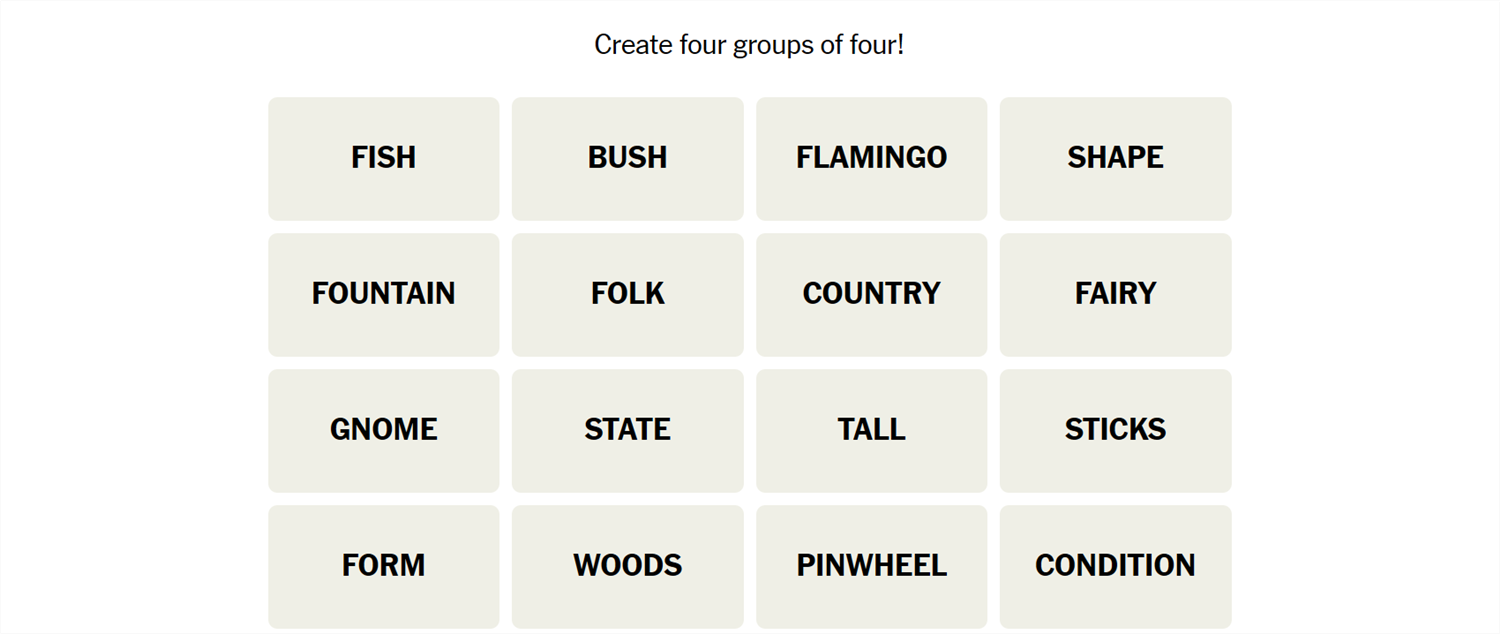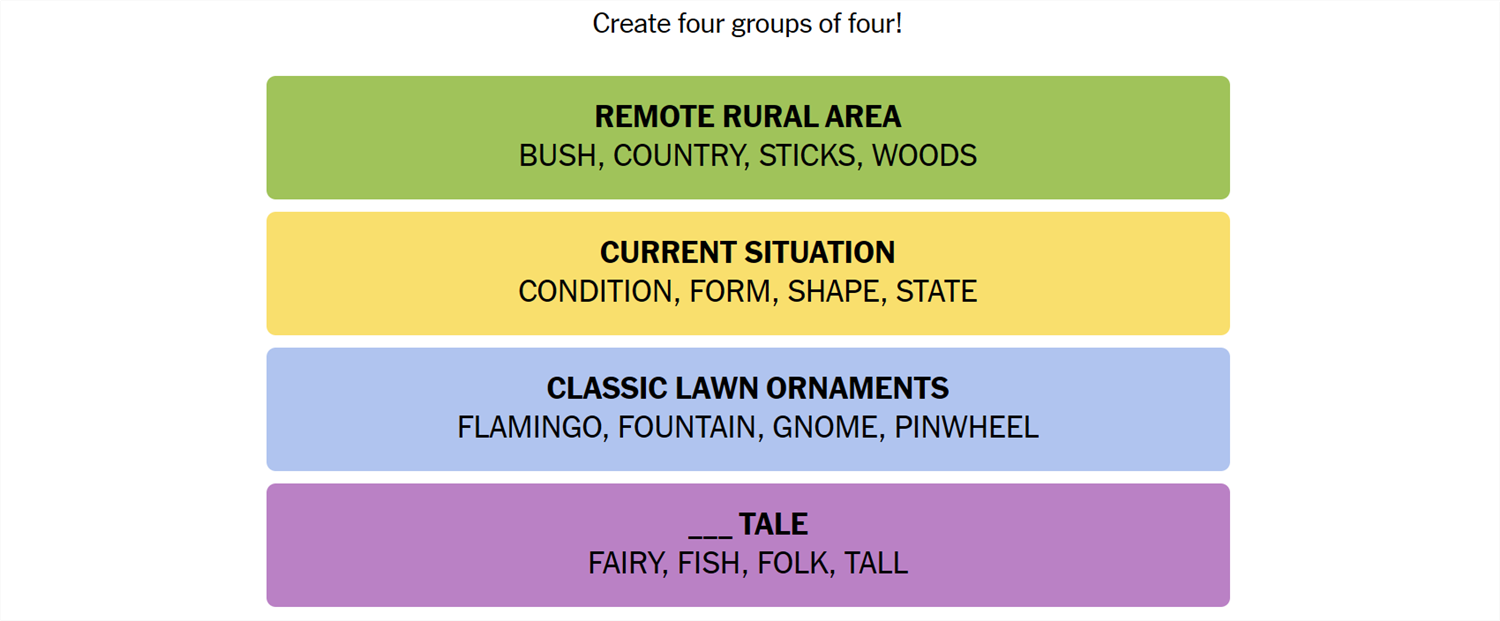Connections is a game from the New York Times that challenges you to find the association between words. It sounds easy, but it isn’t—Connections categories can be almost anything, and they’re usually quite specific. If you need a hand getting the answers, we’ve got you covered.
What Is Connections?
Connections is a game from the New York Times. The objective is simple: sort 16 words into groups of 4. Each group of words will be connected by some common idea or theme. That common element could be anything. We have seen everything from games that rely on the number of letters in the words to categories that require you to spot an extra letter at the end of the word. Sometimes they’re references to economics, other times they reference fairy tales. There is no telling what sort of association there will be between words.
Once you’re confident you understand the connection, select 4 words, then hit “Submit.” You have only four attempts in total, so don’t be too guess-happy.
Hints for Today’s Connections Groups
Here are a few hints for the 371st Connections game to get you started:
- Yellow: The way things are at the moment.
- Green: The middle of nowhere.
- Blue: Things you might see in a yard or a garden.
- Purple: Not to be confused with tails.
If you still need help, the actual group names are:
- Yellow: Current Situation
- Green: Remote Rural Area
- Blue: Classic Lawn Ornaments
- Purple: ___ Tale
Today’s NYT Connections Answers
Current Situation (Yellow):
Condition, Form, Shape, State
Remote Rural Area (Green):
Bush, Country, Sticks, Woods
Classic Lawn Ornaments (Blue):
Flamingo, Fountain, Gnome, Pinwheel
____ Tale (Purple):
Fairy, Fish, Folk, Tall
How Did We Solve This Connections Game?
June 16th was a decidedly average game, but did have a few words that jumped out. Some of the words were in the game from Friday, and at least one word was a category yesterday. That threw me briefly.
The first word I latched on to was country. It can refer to a nation, a music genre, or a term to describe living in a rural place. Quickly skimming the words, I settled on the last definition. That led me to bush, sticks, and woods. Those four words were in the Green group, “Remote Rural Area.”
Next I looked at state. State originally threw me off a little, since it is similar to country. However, state can also refer to something’s current configuration—a definition that fits reasonably well with shape, form, and condition, too. Those 4 words were in the Yellow group, “Current Situation.”
Flamingo, fountain, gnomes, and pinwheels are all lawn decorations of one kind or another, so I stuck those together on a whim. The group, Blue, was titled “Classic Lawn Ornaments.”
That left fairy, fish, folk, and tall. Folk and fairy immediately pointed me towards fairy tale and folk tale, and it was easy to see how tall and fish were also connected. Purple was just “____ Tale.”
How Do You Guess Connections Groups?
There is no quick, reliable way to approach Connections like there is with Wordle, since Connections isn’t algorithmic. However, there are a few things to keep in mind that can help.
- Look for similar parts of speech. Are some words verbs and others nouns? Are some adjectives? Try mentally grouping them based on those categories and see if any other patterns jump out at you.
- Are the words synonyms? Sometimes categories will just be synonyms for a phrase, or very close to synonyms. Don’t rely too closely on this, though. Occasionally, Connections will deliberately throw in words that are sometimes synonyms to mislead you.
- Try saying the words. Sometimes, saying the words helps. One puzzle we saw included the words go, rate, faster, clip, pace, speed, move, commute, and hurry—all of which are obviously related to the idea of motion. However, when you say them, it becomes a little more obvious that only four (go, move, hurry, faster) are things you’d actually say to prompt someone to get moving.
- Expect the red herring. Connections usually has words that could be plausibly, yet incorrectly, grouped together. Take the words Bud, Corona, and Light, as an example. You might instinctively see those three words together and assume they’re lumped together in a category related to beer—but they weren’t.
- Look for distinct words. If a word on your board doesn’t have multiple meanings or can really only be used in one context, try using that word as the basis for a category.
- Shuffle the board. Sometimes, moving words around will help you look at them in new ways.
If you didn’t solve this one, don’t feel too bad—there’s always tomorrow! And those words may align with a topic you’re interested in, giving you a leg up on the competition.






